"It does not come out on the tail, I will grab you, reptile, on the plane"
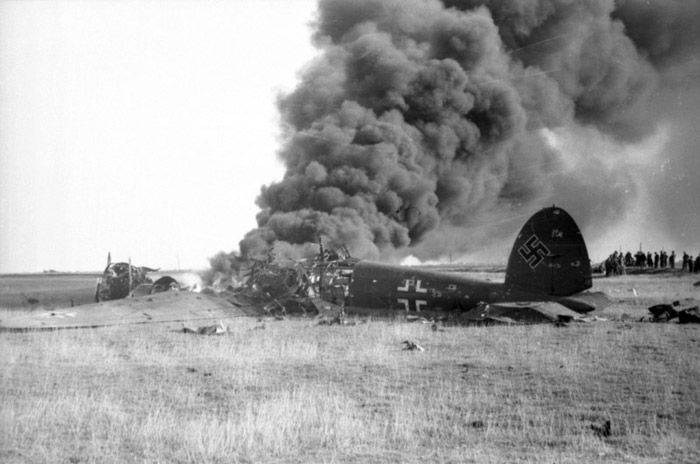
The cartridges ended, they hit the enemy planes with blows of screws, and when they were hit, they turned into a deadly striking blow.
War was still raging far from the expanses of the Don and Kuban. North Caucasus soldiers, pupils of the District Air Force, fought against the invaders on all fronts. They fought for every inch of their native land, not sparing their lives. Some of them performed heroic feats on the first day of the war.
A fighter pilot, a former master of color printing at the Ilyich Rostov Chromolithography named after Vitaliy Slyunkovich Slyunkin, along with a wingman, senior lieutenant P. Chirkin, at dawn on June 22, 1941 entered into an air battle with enemy aircraft, then they conducted reconnaissance of enemy troops. Fascist anti-aircraft guns set fire to Chirkin’s plane, and he threw his plane into the thick of German tanks. For his death, the whole war avenged the Nazis Vitaly Slyunkin, who was awarded the title Hero of the Soviet Union and many other government awards. He survived and after the war worked in Rostov-on-Don.
Flight commander Dmitry Vasilyevich Kokorev 22 June 1941 of the year, taking off with unloaded machine guns (as indicated in the award documents) found the plane Me-110, caught him and with a propeller of his plane cut off the tail. German collapsed on the ground near the airfield Vysoko Mazowiecka. The Soviet pilot was able to land the damaged aircraft, he survived. Dmitry Kokorev was awarded the Order of the Red Banner.
The navigator of the squadron S.M. Gudimov shot down cannon fire Xe-111, the second enemy aircraft they rammed. Rushing out with a parachute from a burning plane, Gudimov was killed.
The pilots E. Panfilov and G. Alaev initially did not let the group of “Junkers” to their aerodrome, and then engaged in battle with the “Messerschmitts”. The enemy had a tenfold advantage. Soviet pilots were able to shoot down two German planes. Lieutenant Alaev in this battle died the death of the brave. And Panfilov rammed the enemy, chopped off his tail, and he himself landed safely on a parachute.
On June 26, 1941, the whole country spread the news of the exploit of Nikolai Frantsevich Gastello, who before the war served in the air forces of the North Caucasian District in the 82nd 21st Heavy Bomber Squadron aviation brigades. The IL-4 plane, piloted by the squadron commander, set fire to enemy anti-aircraft guns. Gastello directed the flames enveloped in a flock of troops and military equipment of the enemy. Captain N.F. Gastello was awarded the title Hero of the Soviet Union, his name is forever listed in the aviation regiment. Navigator crew IL-4 G.N. Skorobogaty, shooter-radio operator lieutenant A.A. Burdenyuk and air gunner Senior Sergeant A.A. Kalinin posthumously awarded the orders of World War I degree.
According to some reports, in the first days of the war 16 air rams were committed. Soviet pilots showed unparalleled heroism and courage. When they saw that they could not reach their own, they made the decision to go to the ram.
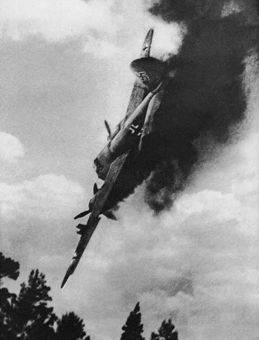 The German Air Force faced this for the first time and was shocked: after all, they did not fight in Europe. At the beginning of November 1941, German pilots received an order signed by the Reichsmarshal Goering, who demanded: "... not to approach Soviet aircraft closer than on 100 meters in order to avoid ramming."
The German Air Force faced this for the first time and was shocked: after all, they did not fight in Europe. At the beginning of November 1941, German pilots received an order signed by the Reichsmarshal Goering, who demanded: "... not to approach Soviet aircraft closer than on 100 meters in order to avoid ramming." In early October, 1941, the Nazi troops invaded the North Caucasian Military District. The Rostov-on-Don, railway stations and bridges on the Don covered 271 and other fighter regiments of the 73 Air Division from the air (division commander Lieutenant Colonel GI Belitsky, commissar of the division regimental commissar DK Machnev). The division was based at the Nakhichevan airfield, near the Rostselmash plant.
From October 9 1941, it operated from the airfields of the Taganrog Aviation School, one of its regiments was based on a field airfield, the squadron Р-5 was located north of Taganrog. Soon, many of these airfields were under enemy artillery fire. But the pilots did not stop their combat work for an hour - from dawn to dark.
Former Commissar of the Division, Major General Aviation D.K. Later, Machnev told about this time:
“Neither on the ground nor in the air did the roar of the engines keep silent for a minute, the pilots rose into the sky and immediately bombarded the bombing assault on the moving enemy columns in the direction of Taganrog. Neither anti-aircraft fire, nor Messerschmitt attacks - nothing could block Russian aviators from reaching their targets. Having completed the tasks, they returned to the airfields, quickly and with aviation specialists filled the aircraft with fuel and ammunition, re-ascended to the sky and blocked the enemy's way to the Don ”.
The fact that the fascist soldiers in the first half of October failed to break through to Taganrog is a considerable merit of the entire personnel of the 73 th aviation division. On the night from October 15 to October 16, the crews of the aircraft made a massive flight in the dark. ”
After redeploying the regiments, the divisions conducted combat operations from the field airfield, covered Rostov-on-Don and ground troops from enemy aviation strikes, conducted aerial reconnaissance, and delivered precise bombing and assault strikes.
Meanwhile, the German 4 air fleet, covering the Kleist 1 tank army advancing along the coast of the Sea of Azov, intensified its raids. He was opposed by the air forces of the 56-th Separate Army. Together with them they launched active combat operations of the 183 th Fighter Regiment under the command of Major A.V. Hirny, as well as 248, 762 and 860-th aviation regiments, included in the group under the command of Colonel Ya.I. Gilya This entire group and other aviation units that were part of the 56 Army's air force were formed from the personnel of the Armavir, Batay, Krasnodar and Stalingrad aviation schools.
Experienced pilot-instructors, commanders of units and detachments, who perfectly mastered piloting techniques and had excellent fire training, arrived at the front of these educational institutions.
From the airfield, which was located near the village of Kuleshovka, Azov district of the Rostov region, took off on a signal rocket to intercept an enemy plane, a twenty-year-old senior Nikolay Shtukin. From a distance, the young pilot found an unfamiliar silhouette of the aircraft and unmistakably identified it: the Junkers-88 twin-engine bomber, which flew at medium height along the Salsk-Bataysk railway and was conducting photo reconnaissance, preparing to drop bombs on the railway echelons.
Nikolay Shtukin attacked a bomber. Enemy arrows opened fire on a Soviet fighter. Queue flashing wing console. Shtukin opened aimed fire, but the firing range was great, the bullets did not reach the target. "Junkers", maneuvering, tried to get out of attack. But our fighter, through dense fire, broke through to the bomber and opened fire on it from close range. The Junkers began to smoke, but continued to fly. Then Shtukin approached him and slashed him with a screw of his car. The German fell into the Don river area near Rostov. In that battle, Nikolai was wounded, but managed to get a plane damaged during a ram attack from a corkscrew and returned safely to his airfield. Having recovered, he continued his combat flights. Lieutenant Nikolai Shtukin died in an unequal air battle 16 August 1942.
In the air battles in the Don sky, TT Matvienko, commander of the detachment of the Bataysky College named after AK Serov, the commanders of the links N. And. Kozlovsky, A.L. Chikin, flight instructors F.I. Soft, S.M. Sargsyan and many other aviators. So, Lieutenant Chikin flew almost every day to escort bomber aircraft and never let enemy fighters approach them. He then shot down five German planes.
Fighter groups, led by officers Saprykin and Yermakov, destroyed only four enemy aircraft in one assault raid, set fire to five fuel tanks, destroyed a firing point and a large number of fascist soldiers. Lieutenant Yanushkin shot down an enemy plane as he attempted to rise from the airfield.
Pilots Azarov, Bardin, Botyanovsky, Budnikov, Zheleznov, Ivanov, Kolesnikov, Novokshchenov, Orekhov, Ostredinov, Sanin, Saprykin, Skvortsov, Ulyanov, Shevchuk, Yakushkin made five or seven combat sorties every day.
In an extremely difficult situation, Soviet bomber had a chance to act. The fighters did not stand out for their cover, and Messerschmitts flew in flocks in the sky, the enemy covered their troops with numerous anti-aircraft batteries.
Still, the crews of our bombers made their way to the targets, delivered accurate bomb strikes to the invaders. The sky blazed with fire, black caps of anti-aircraft shells exploded around the planes, Messerschmitts were beating at them, but our pilots made often blazing vehicles on the combat course, and the navigators Vasilyev, Lepeshinsky, Lyubenko, Petrov, Sumchenko dropped bombs on the areas where the vehicles were concentrated , tanks, the living force of the enemy. When approaching our German fighter bombers, their attacks were beaten off by the radio-operators Kobyakov, Sandukadze, Telpov, and Shklyaev.
Leaflets and posters were dedicated to them. They were told on their pages by the large-circulation newspaper of the 74 Air Division. Essays about the brave and courageous actions of the aviators were published at the same time as a separate brochure called “The Account of Victory”. There is in this collection and essay of the writer V.A. Zakrutkin about Senior Lieutenant Vladimir Tarasovich Kulagin, who committed two rams of enemy bombers in November 1941.
... It was near the city of Bataisk. The day was clear and sunny. Vladimir Kulagin was on duty at the airport at his “hawk”. Behind him, our heavy artillery guns rumbled. Ahead, where the trenches were winding in a line, there were sharp breaks in enemy mines. The senior lieutenant knew that German pilots were trying to break through the position of our batteries in the morning.
At three o'clock in the afternoon, the senior lieutenant Kulagin was given the order of Major Krikun:
- In our site broke "Heinekel-111". Ordering to immediately fly out and destroy it.
"Hawk" Kulagin soared up. Junior Lieutenant Vavilov flew behind him. After gaining altitude, the fighters lay down on the indicated course and headed to where the enemy bomber was circling.
Noticing the trail of the enemy, Kulagin went to a rapprochement. Going into the tail of the Heinkel, the lieutenant began to fire at him from a cannon and machine guns. German shot off. Somewhere behind, Kulagin saw machine-gun bursts: Vavilov helped. But then the ammunition ran out, and the Heinkel went north. And at that moment Kulagin decided to go for a ram.
He knew that a ram requires from a pilot of the highest art, the most subtle calculation, fearlessness and, most importantly, cutting an enemy machine with a screw, but cutting it so as to survive himself is damn hard. And yet Vladimir Kulagin decided. Increasing speed, he led the “hawk” after the “Heinkel”. The distance between them decreased.
“Ruban his tail,” thought the senior lieutenant, but at the same moment he felt that the “hawk” had somehow been thrown back and down. “Yeah, it threw me away with a strong stream of air,” Kulagin realized, and immediately made a new decision: “It’s not coming out the tail, I’m gonna get you, reptile, on the plane.”
Speed up again. Lightning jerk to the right. "Heinkel" looms right before his eyes, running away with all his might. The shadow of an enemy wing appeared.
"So. I am under the right plane, thought Kulagin. “We have to start!” With a slightly uplifted nose of the “hawk”, he saw a German pilot for a second and slightly increased his speed again.
There was a sharp crackling and grinding of metal. Senior Lieutenant Kulagin quickly turned the plane into a dive and, making a circle, looked around: on the spot where the Heinkel was overtaken, only plane fragments flew.
Kulagin did not hear how the Heinkel he chopped exploded on his own bombs, did not see how our soldiers were happy about it.
Checking the control of the aircraft, he went to the decline in the direction of the airfield and soon landed the plane.
His commanders were already walking towards the senior lieutenant, his comrades were running, everyone wanted to say something about his admiration. The division commander, Colonel Gil, congratulated Kulagin on his victory.
The next day, Kulagin again collided with a German plane in the area of Koisug, and again he decided to go for a ram. Having overtaken the German, the senior lieutenant slashed his right plane with a screw. Sprawling, the enemy bomber crashed to the ground.
More than three decades later, on a yellowed, dull brochure kept by his son, V.T. Kulagin - Major Order Bearer V.V. Kulagina, the writer Zakrutkin made the following inscription: “Pilot Kulagin accomplished his feat in my presence, and I always keep the memory of him.”
At that time, it was taken in dugouts, in canteens - wherever personnel were going to hang out colorfully written “lightning”, for example, with the following content: “Keep an eye on Communist Senior Lieutenant Andrei Novokschenov: 22, 28 and 29 in November, he and his subordinates the pilots made six to eight daily sorties, they destroyed dozens of cars and hundreds of Nazis ”; “We will revenge the enemy for the heroic death of the commander of the first squadron, Captain Kulkov. He and his followers engaged in a battle with twelve Messerschmitts, did not let them near our bombers, shot down two enemy fighters, and the rest went away. ”
“Famous in battles!” - in the leaflet under such a headline it was a question of the 6 of the separate squadron of Captain Kumantsev. Vivid examples were given.
On October 26, Captain Kumantsev engaged in battle with six Messerschmitts, two of them shot down. On October 27, Captain Kumantsov and Lieutenant Levitan attacked a group of “Junkers”, shot down a leading aircraft, did not allow the crews of bomb carriers to drop bombs on the railway station. When repelling the "Messerschmitt" attacks, Kumantsev died the death of the brave.
In those days, the squadron under the command of A.I. Novokschenova, V.T. Kulagin, pilots Bardeen, Gnido, Naumov, Sanin, Saprykin, Kholodny, Shevchuk made 6-7 combat sorties.
A participant in the fights for Rostov was often told about his comrade Andrei Ivanovich Novokschenov, how he knew how to fight. It was a courageous fighter pilot. Tall, slim, with black eyebrows, with an aquiline nose. He seemed never to be discouraged: during a raid on the airfield, the Messerschmitts laughed, watching as they scribbled on the plywood mock-ups of the airplanes, as soon as the command to fly was heard, they jumped to the car with their planted leaps; he returned from the battle, inflamed, his eyes did not sparkle, but they burned, his nose was even more humped (friends called him a golden eagle).
“One fascist decided to make fun of me,” said Andrei Ivanovich after the battle. - I approached to the right, took off my glasses and made a hand sign to me: they say, kaput, I flew away. Angry with fire burned me. I turned the top and went to him, the bastard, in the tail. He gave a long queue, and I looked, the messer began to smoke, went like a stone to the ground. “Kaput, Fritz, you flew away,” I shouted after him.
Even in bad weather Novokschenov and his partner flew into battle. Owning the skill of piloting in the most difficult meteorological conditions, they performed the most responsible combat missions.
... Gloomy December morning. Heavy, dense clouds hung over the Don. Felled snow. Visibility to the limit is limited. Only two of them were preparing for combat flight: Senior Lieutenant Novokschenov and Lieutenant Shatalov. They were supposed to conduct reconnaissance of enemy troops grouped around Taganrog.
“Yes, it is perhaps not easier to break through to Taganrog at a low altitude than a camel to crawl through the eye of a needle,” said the pilots flying there. Their aircraft were riddled with fragments of anti-aircraft shells. But after all, only large-caliber anti-aircraft guns fired at them: fighters marched at high altitude.
There was a signal "air"! To the airfield from the east I went at a low altitude "Heinkel-111" - a scout. Novokschenov and Shatalov climbed into the sky. They turned abruptly and, being behind the Heinkel, caught up with him, opened fire with cannons and machine guns. Heinkel crashed to the ground. There was an explosion.
Meanwhile, our fighters disappeared behind the Don. Novokschenov and Shatalov left to perform the main task. Whole, they returned to the airfield and reported fresh information to the commander: locations of enemy tanks, artillery positions, moving infantry columns.
During the day (the weather improved afterwards), the squadron commander of the Novokschenov drove the pilots to strike at the detected targets. Six sorties each made. In total, three or four hours they were in the zone of enemy fire. Having been injured, Novokschenov and Sanin’s flight commander did not let his subordinates know about this. Together with all of them, they stormed the tanks and infantry of the enemy.
But war is war. In a heavy, unequal battle with a large group of Messerschmitts, the hero and the senior lieutenant Novokschenov soon fell. His comrades continued their journey on airplanes with the inscriptions: "We are avenging Andrei Novokschenov."
The name of Andrew preserved. There is a monument under the city of Azov, erected to the pilots who fell in battles. On the monument is carved and the name Novokschenova. In the name of Andrey Novokschenov one of the streets of Azov is named. And his son, Sergei, also became a military pilot.
In one of the most intense days of battles for Rostov-on-Don, in the front-line newspaper and leaflets, there were reports of the heroic death of Lieutenant Nikolai Sinyakov.
At the head of his "Ilyushin" link, the pilot stormed the enemy convoy in the area of Kirsanovka, Alekseyevka and Matveyev Kurgan. He made several visits to the target, and each time he accurately hit the target. When exiting the last attack, an anti-aircraft missile exploded in his car. The car was in flames. Then Sinyakov sent a plane enveloped in flames into a cluster of German trucks. The lieutenant died as Gastello.
The leaflets about these heroes-pilots said: “Their exploits call us into battle, like the sonorous voice of the forge. Their names fly over us like battle banners. ”
The whole Southern Front then became aware of the name of Alexander Ivanovich Pokryshkin. To him, who by that time had accomplished more than one heroic feat, the commander of the 56 Army's air force, General S.A. Krasovsky entrusted the most responsible and difficult combat mission: to scout the location of the enemy’s tank units.
That day the weather was unfavorable for flying. Thick impenetrable clouds. Disguised in its lower edge from the Nazi invaders, Pokryshkin declined in areas of the alleged concentration of German tanks, determined their number and again went into the clouds.
The information provided by Pokryshkin after a successful extremely difficult and dangerous flight, allowed the commanders of air units and formations to send groups of airplanes (the weather improved to 9-10 hours of the morning) for strikes at detected enemy tank units. Particularly distinguished pilots 20 th mixed and 50 th aviation divisions, the regiments commanded by VS. Arbatov, G.M. Krikun, A.S. Cerebral. This and their military expense entered the message Sovinformburo 1941 years, in which he said: "For 28 November our aviation destroyed 195 German tanks, 19 armored vehicles to 800 vehicles with troops, 40 guns, several staff buses, about 100 motorcyclists, 6 road tankers with fuel, destroyed two regiments of enemy infantry. "
30 November The 1091 of the year Pravda published the following telegram of Supreme Commander IV Of Stalin to the Commander of the South-Western Direction to Marshal of the Soviet Union S.К. Tymoshenko and the commander of the troops of the Southern Front, Ya.T. Cherevichenko: “... Congratulations on your victory over the enemy and the liberation of Rostov from the Nazi invaders. I greet the gallant troops of the 9 and 56 armies with General Kharitonov and Remezov, hoisted our glorious Soviet banner over Rostov! "
2 December 1941, crew of Senior Lieutenant S.I. Kretova as part of a group of bombers bombed enemy tanks found behind Taganrog. When returning to his base, his plane was attacked by Messerschmitts. Maneuvering, Kretov drove the car out of the enemy's shelling and opened fire on the bomber with a swastika in front of him. The Messerschmitt flared and crashed to the ground. Soviet pilot badly damaged the second German fighter. But the rest of the Messerschmitts managed to set fire to the bomber, the navigator and the gunner-radio operator were killed. Kretov left the now uncontrolled aircraft and parachuted down to the Taganrog Bay. Drenched to the skin, then icy, he made his way twenty kilometers from the location of his units. Completely exhausted, he was picked up by the Red Army and sent to the medical battalion.
Having recovered, pilot S.I. Kretov continued to destroy enemy objects. He was twice awarded the title Hero of the Soviet Union and many other government awards.
In the winter of 1942, the twenty-two-year-old pilot junior lieutenant Arseny Shevchuk fought heroically. In a short time, he made 35 combat missions to attack and reconnaissance of fascist units, shot down an enemy aircraft.
February 15 Shevchuk again flew to attack. Suddenly appearing above German tanks and cars, he fired shells on them. Then he hit the German machineguns with machine-gun fire. However, the German anti-aircraft gun badly damaged Shevchuk's car. Then Arseny threw his shot down plane on enemy equipment.
Almost every day, the crew of Captain Boronin (navigator, senior lieutenant Petrov, gunner-radio operator, senior sergeant Khairulin) drove a group of bombers three or four times. Aviators found and destroyed important targets.
... Navigator Petrov noticed camouflaged tanks and cars in the forest belt. Captain Boronin led the squadron to the combat course. Sighting bombs dropped. Below, several tanks, motor vehicles and a tank of fuel caught fire.
After the bombing, a group of bombers returned and headed along the road. The navigator Petrov discovered a column of vehicles with infantry. Crews dropped and fired at the Nazis with machine guns.
The next day, Captain Boronin flew to the destruction of communication lines. The morning was overcast, solid low clouds covered the plane to the ground. Bombing had to be abandoned - because of the clouds you will not get into the communication line. Borodin showed resourcefulness. After releasing the landing gear, he broke off the wires hanging from the pillars with the wheels of his aircraft. With several such visits, the pilot disabled communication over several kilometers. And on the way to their airfield, the crew dropped the bomb load onto the Nazi convoy.
By noon the clouds had thinned, the sky had cleared. Captain Boronin led the squadron to strike the tank column south. The enemy noticed our bombers from afar and met them with dense anti-aircraft fire. Breaking through the tracks of the Erlikon, the squadron entered the combat course and dropped bombs. Then, one by one, the aircraft swooped down and fired the fascists with machine guns. When Boronin exited the third attack on the plane, an enemy shell exploded. The pilots ruined their eyes with the broken pieces of plexiglass, but he was temporarily blinded and continued to fly the plane. When his eyes washed with a tear, Boronin began to gather a group.
At this time, six Messerschmitts attacked Boronin’s plane. There was a flash of fire in the cabin. A shrapnel bombshell wounded in the navigator's leg. In the next instant, the luminous track struck the cockpit. But the navigator Petrov and the gunner-radio operator Khairulin continued to fight off the enemy fighters, and the pilot, sharply maneuvering, broke away from his pursuers.
Boronin’s crew returned to the airfield later than their followers. The pilot put his damaged car on one wheel.
Soon for the shown courage, high flight skills IK. Boronin was awarded the Order of Lenin. Another feat he accomplished in the fall of 1942 of the year.
... At the appointed time, the two “Petlyakovs”, managed by Major I. Boronin and Junior Lieutenant G. Glukhov, started from the Grozny airfield and headed for the west. At maximum height, they crossed the front line, went to Pyatigorsk, in which, according to intelligence, the large headquarters of the enemy was located, then, before reaching the city, dramatically changed the direction of flight. Observing them, the Nazis might have thought that two Soviet bomber headed for another large city, where there were large warehouses.
But the "Petlyakovs" soon went heading for the third enemy object.
So they were dodging, misleading the enemy. Maybe the Germans and directed fighters against them, were made to open anti-aircraft fire on them, but the Soviet aircraft did not appear where they were waited. Because of the mountains, they went to Pyatigorsk. On the move, Boronin and Glukhov drove cars into a dive, dropped bombs on the building, where at that moment the Nazi officers were presented with awards, and left the city on a low-level flight. A week later, the headquarters of the 4 Air Army received information about the results of a bomb strike: over 120, the Nazi officers found a grave under the rubble of the destroyed building. Major Boronin Ivan Konstantinovich was awarded the title Hero of the Soviet Union.
And back to the exploit of Gastello. His example was followed by many pilots. The deputy commander of the 628 regiment, officer Shuvalov, repeated the immortal feat of Captain Gastello, making a fire ram. Pilot Stepan Volkov made two air ramming.
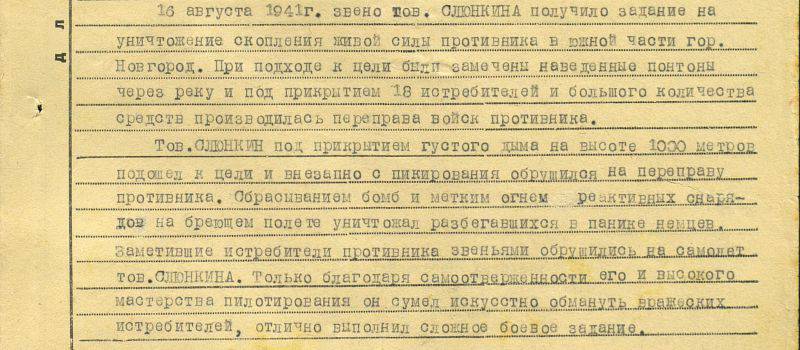
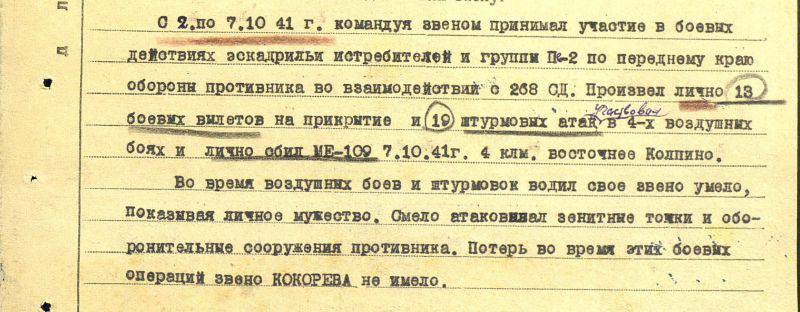
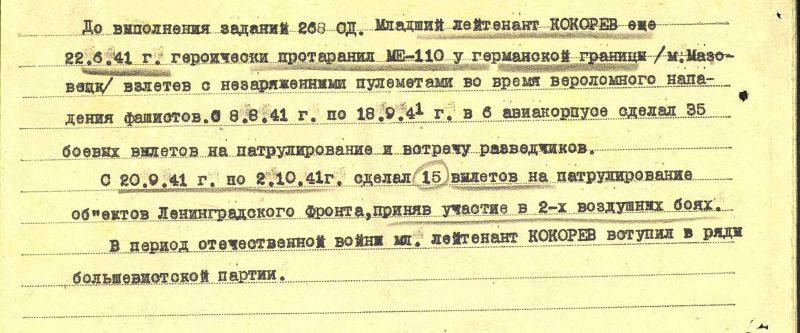
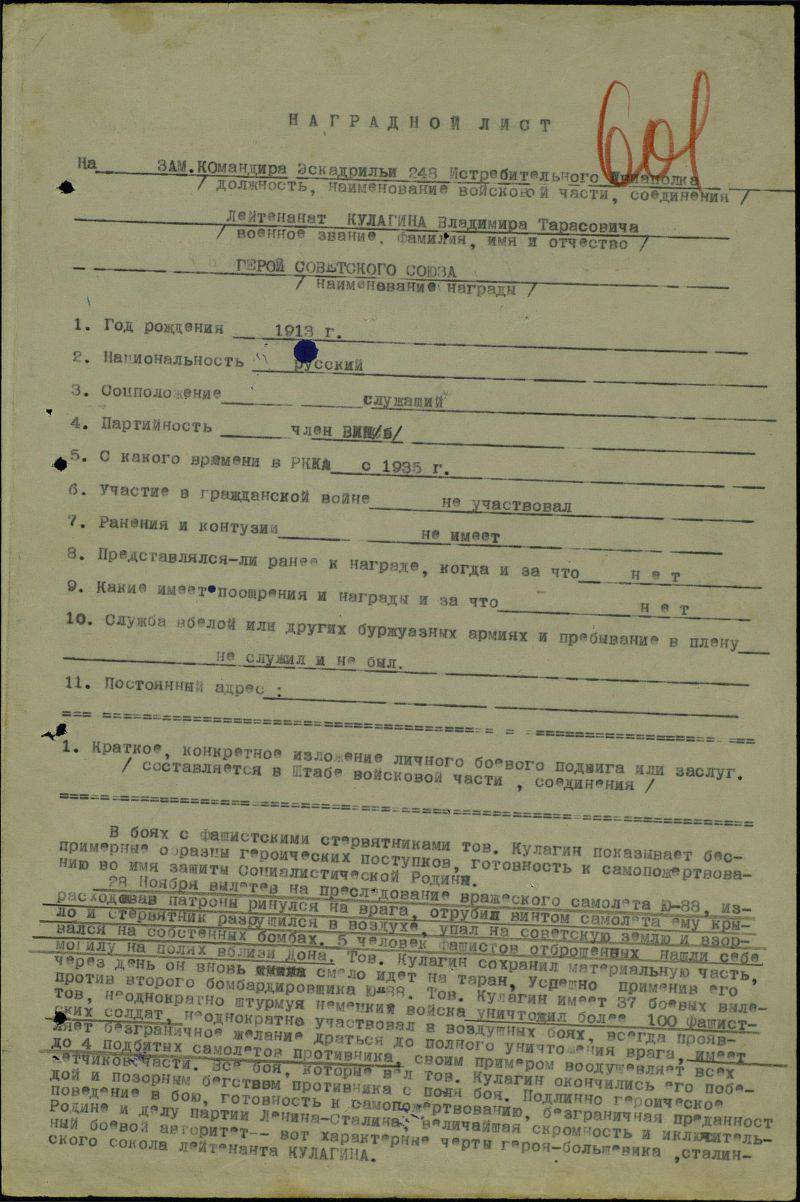
Information